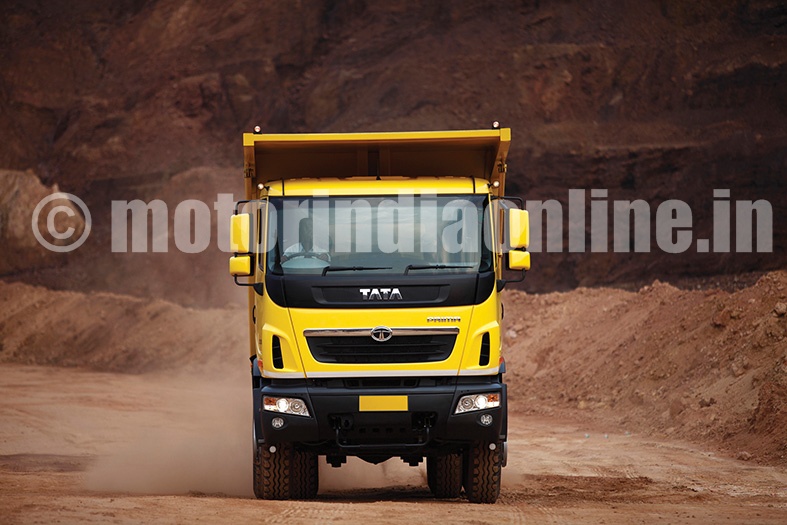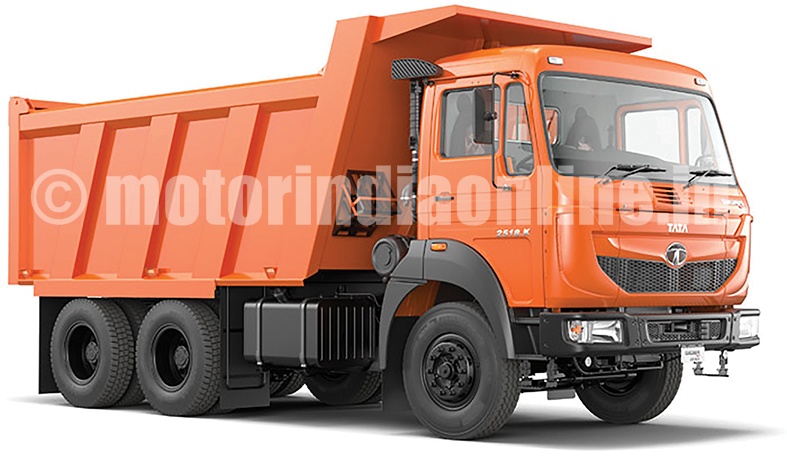Adopts both EGR and SCR solutions
Tata Motors has recently announced the readiness of SCR (Selective Catalytic Reduction) and EGR (Exhaust Gas Recirculation) technologies for BSIV compliant engines, powering its range of commercial vehicles.
Exhaust Gas Recirculation (EGR) technology adopted by Tata Motors in 2010 will continue to power small-to-medium category of commercial vehicles with engine power requirements up to 180HP. EGR helps to reduce NOx emissions from the engine. Additionally, Tata Motors has adopted the globally proven SCR technology since 2014 for its Medium and Heavy-Duty Commercial vehicles ranging from 130HP to 400HP. Tata Cummins Ltd, a JV between Tata Motors and US-based Cummins Inc. has developed these engines. SCR technology allows engine to operate at more optimal combustion temperature providing better power, fuel efficiency and lower NOx and particulate matter generation.
While EGR is a relatively low cost, simple, and ‘easy to integrate’ technology, SCR can be scaled up further to meet the stringent BS VI emission standards. Tata Motors has perfected both the SCR and EGR technologies on a wide range of TML vehicles that have been sold to customers within India as well as abroad.

Mr. Ravindra Pisharody, Executive Director Commercial Vehicles, Tata Motors commented, “Tata Motors has led technology changes in the Indian commercial vehicle industry over the last six decades. We have always endeavoured to develop products and introduce future technologies, ahead of regulations and have played a proactive role in regulation compliance. Tata Motors continues to be at the forefront of meeting emission regulation, driven by our concern on environment and health impact. Introduction and adoption of EGR and SCR technology in 2010 and 2014 respectively reiterates our capabilities with regard to introducing future technologies. Because we strongly believe in offering the best-suited technology for various applications, we will offer both SCR and EGR technologies on BS IV solutions. This will not only meet regulatory requirements for emission norms but also optimize the total cost of ownership, ultimately benefitting our customers.”
Elaborating, Pisharody said, “Offering precise technology for the right duty cycle and application will be critical for the success and sustainable business operations of the commercial vehicle industry. At the onset of BS IV emission norms in India and provident on the ensuing BS VI emission norms from April 2020, we are confident that our selection of emission control technologies across the commercial vehicle range is holistic and the most ideal one, given that it takes into consideration critical aspects such as performance, reliability, commercial affordability, environmental sustainability and future readiness.”

Apart from being the market leader in CVs in India, Tata Motors has been exporting many of its products to countries like Russia, Australia, Europe and Latin America where the emission regulations have been ahead of India and many of its products have been meeting Euro IV and Euro V regulations.
About SCR and EGR
Mr. Girish Wagh, Head – Product Line, M&HCV, TML, elaborated on both the EGR and SCR technologies through a detailed presentation. Selective Catalytic Reduction (SCR) is a process that simply adds a diesel exhaust fluid (DEF) into the exhaust gas stream and filters it through a catalyst. The DEF vaporizes and decomposes to form ammonia (NH3), which, in conjunction with the SCR catalyst, reacts with NOx (Nitrogen oxides) to convert the pollutant into nitrogen (N2) and water (H2O) which are released into the air.
The SCR technology uses less fuel since the engine is tuned to cut NOx and can instead be set up for performance and economy. In addition, fewer active “regenerations” of diesel particulate filters are needed to burn off soot, which in turn uses less fuel.
“For heavy duty application and trucks beyond 180 hp SCR adds up giving a better fluid economy. Fluid economy means consumption of diesel as a fuel as well as the diesel exhaust fuel. It is a trend even globally to opt for SCR solutions for heavy duty application”, said Mr. Wagh.
Exhaust Gas Recirculation (EGR) is a Nitrogen Oxides (NOx) emissions reduction technique within the engine that re-circulates a portion of an engine’s exhaust gas back to the engine cylinders after cooling, depriving it of certain amount of oxygen, leading to lower temperature burn. EGR uses enhanced electronic controls, even-higher-pressure fuel injection, multiple coolers, and optimized turbocharging. This reduces NOx emissions. However, EGR technology has limited potential in terms of being up scaled.
The new technologies will help reduce emissions of NOx. Additionally, compliance to BSIV emission norms (with OBDII) will require accurate control on the engine combustion. This can only be achieved with electronic engines and hence the Indian M&HCV market will experience a significant transition from mechanical to electronic engines.
Tata Cummins BSIV Engines
Cummins’ BSIV engines will cater across ranges from 130 HP to 400 HP powering TATA Motors’ Vehicle Platforms from 16T truck to 49T Tractor Trailers.
Built on Cummins’ legendary B5.9 BSIII mechanical engine, the BSIV compliant ISB5.9 electronic engine will be available in both SCR and EGR technologies. The engine will integrate Cummins’ new generation fuel system and electronic controls, while retaining the robustness and reliability of the legendary B5.9 platform.
Cummins and Tata Motors continuously strive to offer market-leading products to deliver best value to end users. An example of that is the B5.9 BSIII Cummins engine, which was the first mechanical engine in the world complying with BSIII level emission norms. This was made possible because of the continuous connect with customers to deliver a technology most suited for Indian market.

